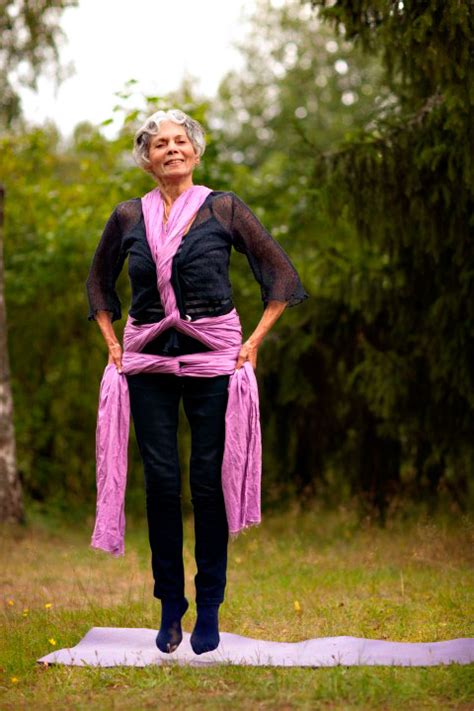
A programme for stimulating bone strength through natural movement and weight-bearing posture
Key Points
- Strong bones are built by dynamic confrontation with gravity.
- The skeleton outsmarts gravity by unifying the whole body in an organization that supports a springy walk.
- At the cellular level, dynamic movement enables the blood that is filled with nutrients and oxygen to penetrate the bone and support the growth of new cells.
- The vicious cycle of lack of movement results in loss of bone strength, which in turn, leads to further lack of movement.
- The code of organic movement that stimulates building bone: springy, rhythmic pressure at a rate that is equal to dynamic walking; configurations of movement that are derived from those that evolution has determined to be efficient and economical; cooperation of all the body parts in harmonious proportion; the transmission of pressure from one polarity to another in a domino effect.
- Structure and function are interdependent.
- The primary condition for sustaining dynamic movements that can build bone is to secure a safe posture that can protect the vulnerable joints in the neck, lumbar, hip joints, and knees and spare them from compression and deviation.
Background
What is needed for the eyes to develop sight? Light. What is needed for the ears to develop hearing? Sounds. What is needed for the bones to develop strength? Confrontation with gravity.
Human beings are able to stand upright due to the ability of the skeleton to support our weight. Feldenkrais used to say that the function of the skeleton is to cancel gravitational force and facilitate movement. Dynamic movement is able to outsmart gravity.
Creatures with vertebrae use the pressure of their own body weight that is thrust into the earth in order to evoke a counter pressure that lifts the body and propels it forwards. Without bones, we would be like caterpillars that produce movement only through muscular effort.
Mobilization of the skeleton is efficient and economical when the pressure onto the ground is rhythmic and is produced in springy pulsations that stream from one polarity to the other in a smooth transition similar to a domino effect. The bones become stronger to the extent that they are used to successfully sustain this two-way pressure.
The need for strength creates the motivation of the organism to build bone. This is basic neurological conditioning. With no demand, there is no incentive and the organism interprets the lack of dynamic confrontation with gravity as if there is no need for strength. What is not used is being deleted from the functional catalogue. This is the vicious cycle of lack of intense movement that results in the loss of bone strength, which leads to further lack of movement. The issue then becomes one of how to interrupt the cycle and safely activate intense movement in a body that is not organized for it.

The Bones for Life® programme incorporates the strategies of organic learning from the Feldenkrais Method®. These strategies awaken the resourcefulness of the organism to invent efficient solutions on its own, similar to the way we learned as babies how to satisfy our needs at the beginning of life. This autonomic learning is in contrast to learning that is based on an outside authority. Like the learner at the beginning of life, the mature learner is constantly experimenting with new options and unused variations in movement patterns, usually done while lying on the floor.
In order to support this learning, in more realistic conditions of dynamic movement performed in the vertical plane, which is essential for affecting bone, the Bones for Life® programme provides greenhouse conditions for protected learning that is sensitive to each person’s condition and rhythm.
It also provides auxiliary support for safe learning through the use of readily available mechanical means such as a wall, a roller, or the Bones wrap.

The configurations of the movement in the programme are taken from patterns of evolutionary mobilization that have proved their efficiency over millions of years.
Personal safety is a primary focus of the programme. If the posture is not well- aligned, there is actual risk of injury in executing movements that are loaded with pressure. The chance of producing an impact of power that stimulates bone strength is conditioned to a great degree on the coordination of all body parts into a consistent alignment of the posture. This is why a large part of the programme is devoted to developing an organization of posture that is well-aligned. This is a basic condition when using the intense style of movement as needed for building bone.
Achieving this dynamic movement that streams throughout the body axis gives pleasure, promotes readiness to move, and inspires biological optimism. This enhanced vitality is the main benefit of the programme. Strengthening the bones is a secondary bonus.
FAQ
Q. Is Bones for Life targeted at any particular age group, or level of ability?
A. No. The somatic learning of Bones for Life is offered gradually and with emphasis on sensitivity to individual pace, range and capacity. Rather than fighting the body to get results, we learn to trust in our own movement intelligence, our own observations and sensations, thereby detaching from unhelpful habits, and adopting a more satisfying and efficient self-management.
Q. How can Bones for Life help with osteoporosis?
A. Bones for Life focuses on good postural alignment and offers a variety of ways in which we can optimise good transmission through the skeleton of forces between gravity and the Earth. This can lead to optimal utilization of impact for strengthening bone and can serve as a basis for every activity that we do, ranging from daily activities to exercise and performance.
Q. Can Bones for Life help with specific problems other than osteoporosis?
A. Yes, while bearing in mind that in Bones for Life we work holistically. Each part of the body is connected with every other part, and the brain is not separate from the body. Because Bones for Life focuses on improving skeletal alignment, problems which arise from poor alignment in the vulnerable joints of neck, hips, knees and spine are naturally eased.
Q. Does Bones for Life improve balance?
A. As our skeleton becomes more aligned through Bones for Life work, the weight-bearing burden on musculature is reduced. This increases the organism’s capacity to recover equilibrium swiftly and smoothly.
Q. Does Bones for Life help with lifting weight?
A. Lifting weight is an obvious way to increase strength. In Bones for Life the back is organized to become stronger by coping safely with lifting weights, using the support of a wall, and gradually building up tolerance for this anti-gravity challenge.
